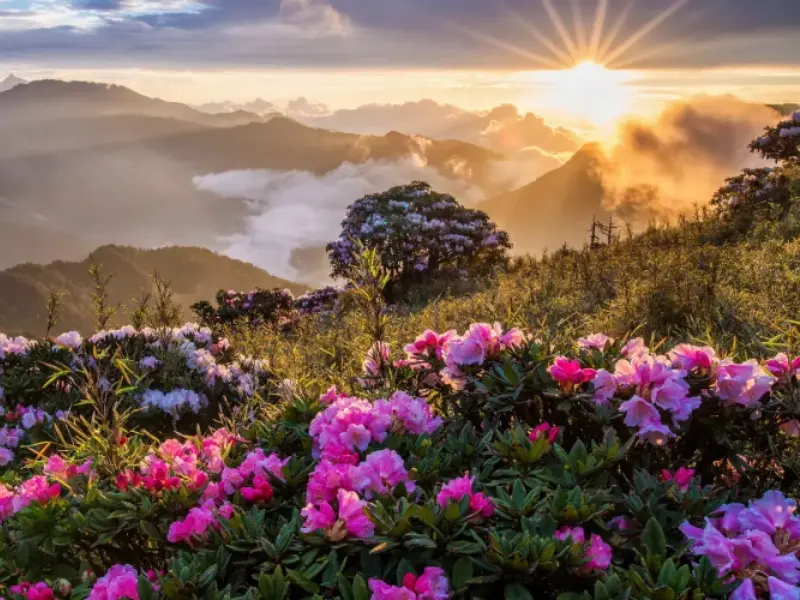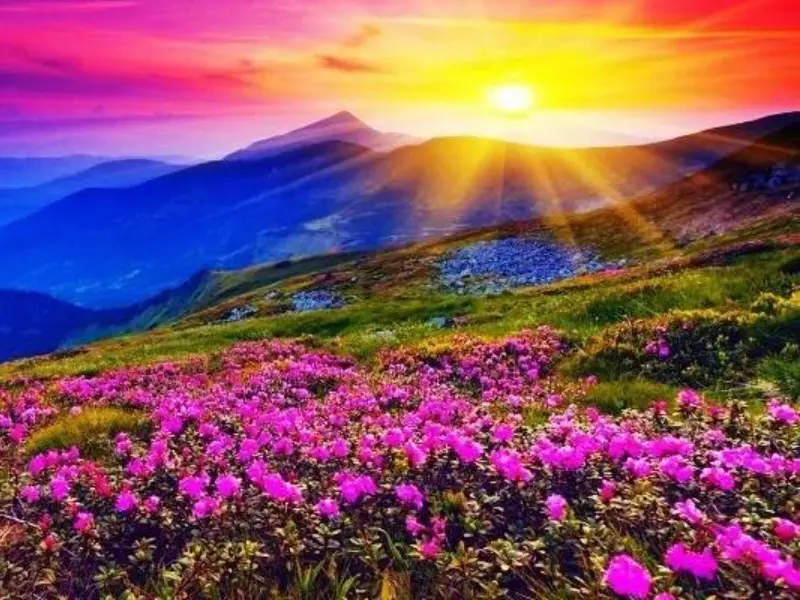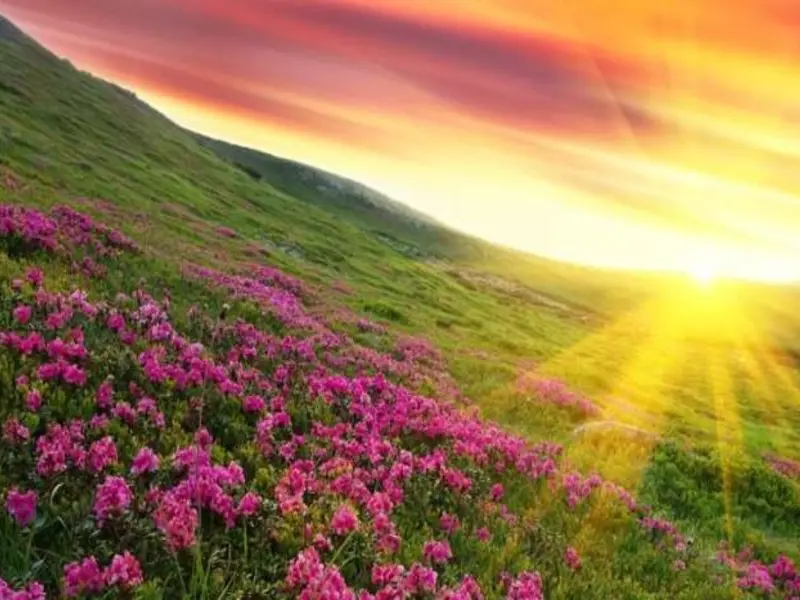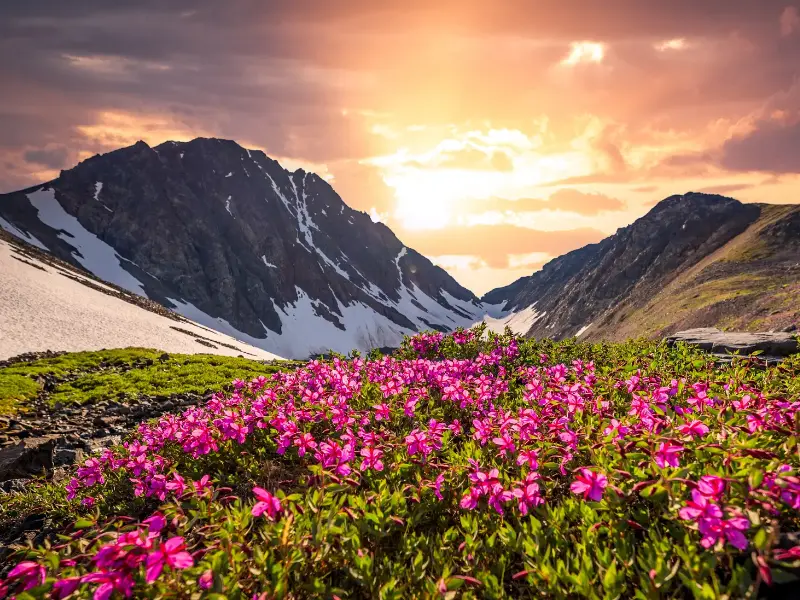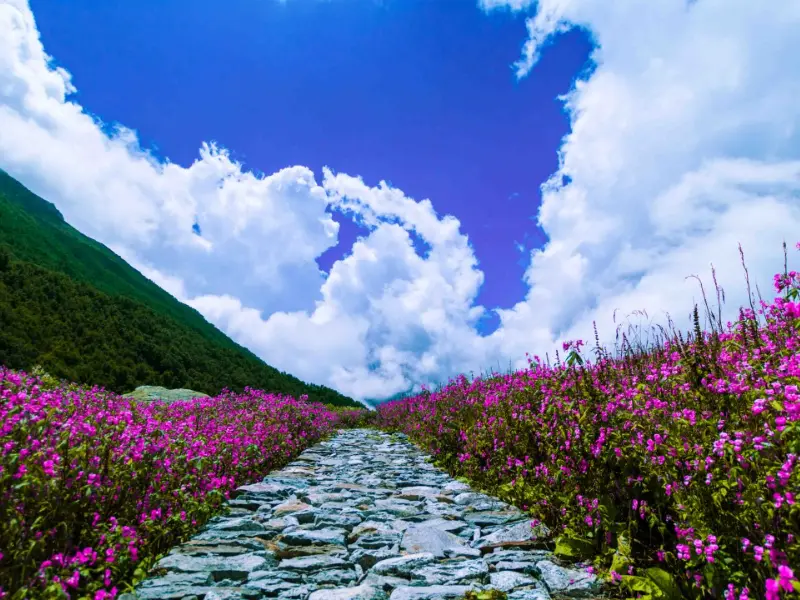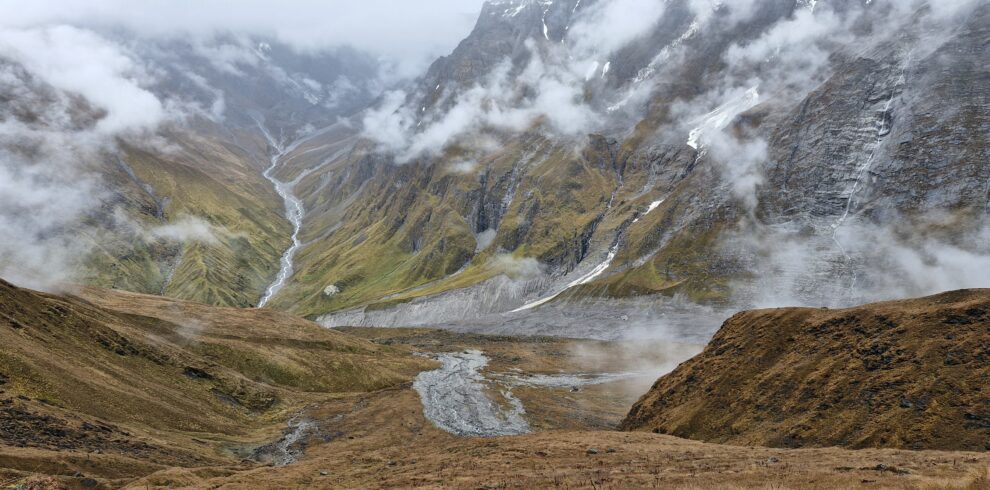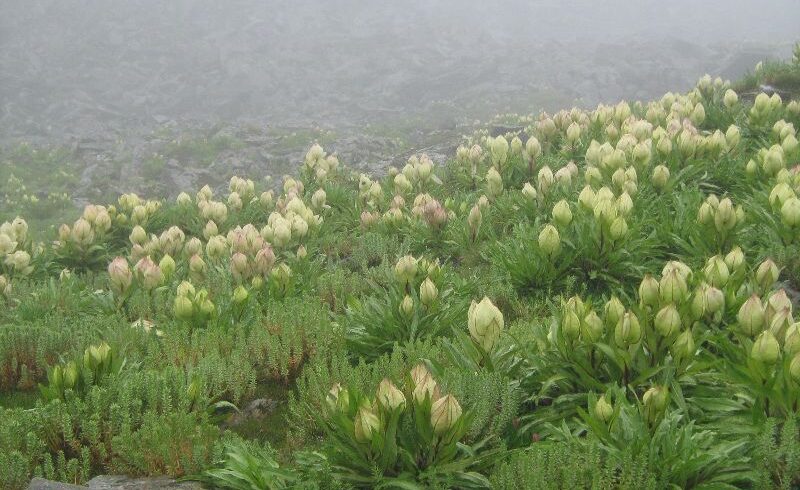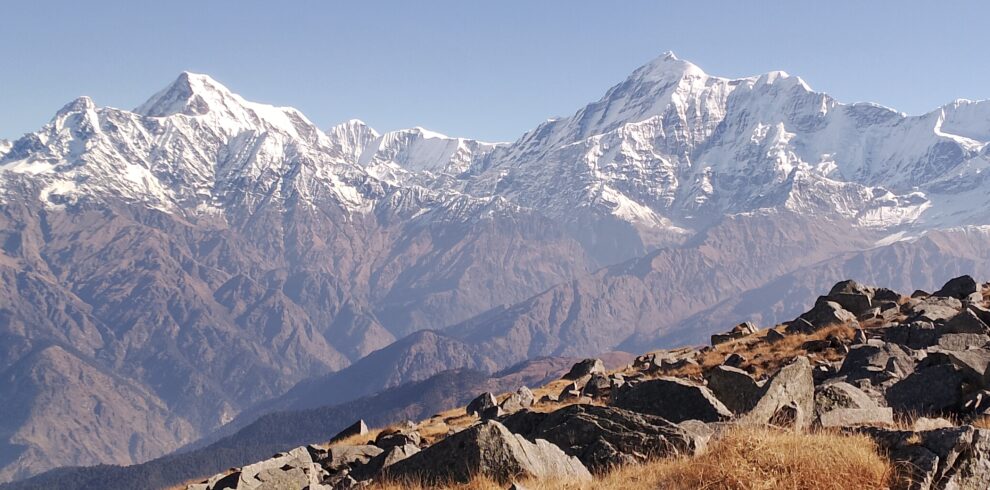The Valley of Flowers, located in the state of Uttarakhand, India, is a UNESCO World Heritage site renowned for its breathtaking natural beauty and diverse flora. Nestled in the Western Himalayas, this picturesque valley spans approximately 87.5 square kilometers and is part of the Nanda Devi Biosphere Reserve.
The valley is characterized by its vibrant meadows, which come alive with a spectacular array of alpine flowers during the monsoon season, from late June to early September. Visitors can witness an ever-changing palette of colors as various species bloom in succession. The valley is home to over 600 species of flowering plants, including several rare and endangered species like the blue poppy, brahmakamal, and cobra lily.
The Valley of Flowers is also a haven for wildlife enthusiasts, as it provides habitat for numerous animal species, including the elusive snow leopard, Himalayan musk deer, blue sheep, and a variety of butterflies and birds. The Pushpawati River flows through the valley, adding to its scenic charm.
Access to the Valley of Flowers requires a trek starting from the village of Govindghat, with a trail that passes through the picturesque village of Ghangaria. The trek is moderately challenging but rewarding, offering stunning views of the surrounding mountains and valleys.
The Valley of Flowers holds great significance in Indian mythology and is considered sacred by locals. It is believed to be the place where Hanuman found the magical herb Sanjeevani to revive Lakshman in the epic Ramayana.
-
6
-
14100 ft.
-
37km
-
Govind ghat
-
Easy to Moderate
Description
The valley is characterized by its vibrant meadows, which come alive with a spectacular array of alpine flowers during the monsoon season, from late June to early September. Visitors can witness an ever-changing palette of colors as various species bloom in succession. The valley is home to over 600 species of flowering plants, including several rare and endangered species like the blue poppy, brahmakamal, and cobra lily.
The Valley of Flowers is also a haven for wildlife enthusiasts, as it provides habitat for numerous animal species, including the elusive snow leopard, Himalayan musk deer, blue sheep, and a variety of butterflies and birds. The Pushpawati River flows through the valley, adding to its scenic charm.
Access to the Valley of Flowers requires a trek starting from the village of Govindghat, with a trail that passes through the picturesque village of Ghangaria. The trek is moderately challenging but rewarding, offering stunning views of the surrounding mountains and valleys.
The Valley of Flowers holds great significance in Indian mythology and is considered sacred by locals. It is believed to be the place where Hanuman found the magical herb Sanjeevani to revive Lakshman in the epic Ramayana.

